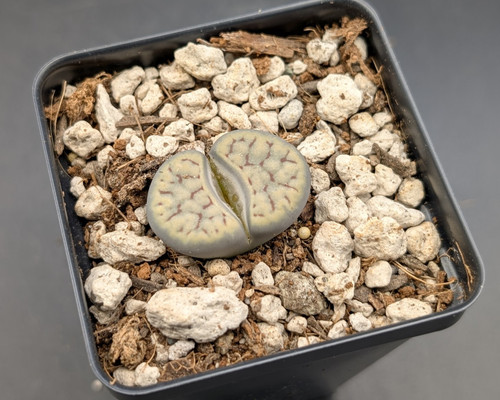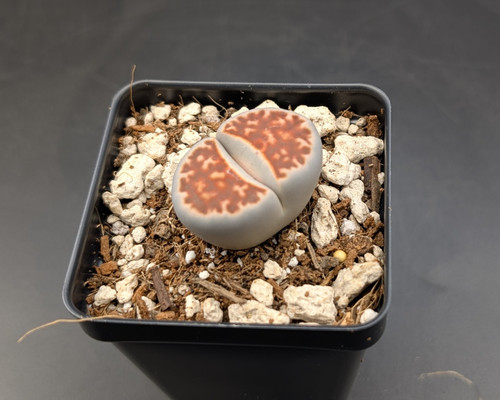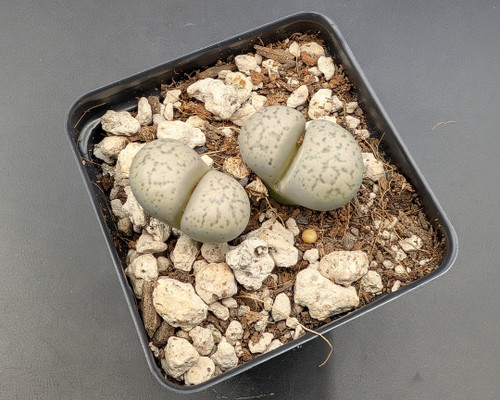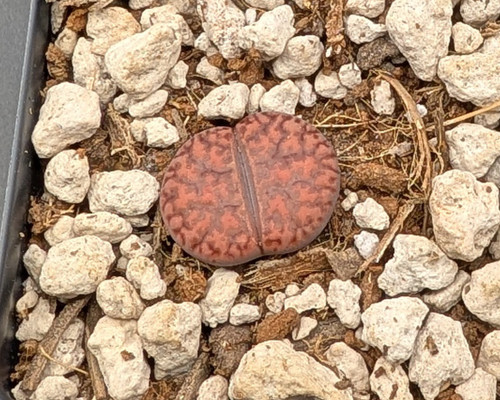Pot Size: 2.5"
Accepted Scientific Name: Lithops dorotheae
Origin and Habitat:
Endemic to South Africa’s Northern Cape, Lithops dorotheae grows in gravelly quartz plains where the soil is pale, and plants remain concealed among stones. Rainfall is limited and seasonal, with long dry periods. The species is highly localized and considered rare in habitat, valued for its strong contrasting markings and adaptation to arid conditions.
Description:
Individual plants consist of paired leaves, 1–1.5 inches across and 1 inch tall. Surfaces are pale cream to greenish with bold reddish-brown windowed patterns. In autumn, large yellow daisy-like flowers emerge from the leaf fissure, often larger than the leaf body itself.
Cultivation:
Zone: 10–11.
Temperature: Optimal 18–27°C, minimum 5°C if dry.
Growth Rate: Slow.
Soil: Requires pumice-rich, sharply draining soil.
Watering: Water lightly during growth, keep dry in dormancy and when old leaves are being replaced.
Fertilizing: Use diluted fertilizer every 2–3 weeks during growing season.
Light: Needs full sun to maintain color and compact size.
Pests and Diseases: Vulnerable to mealybugs and rot from excessive moisture.
Propagation:
By seed; clump division is rare but possible.







